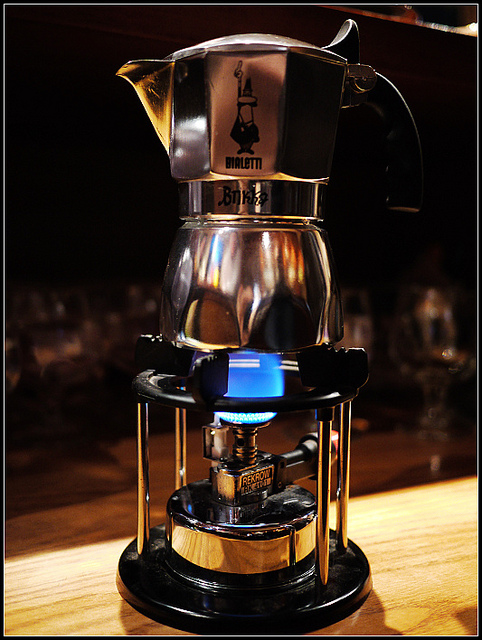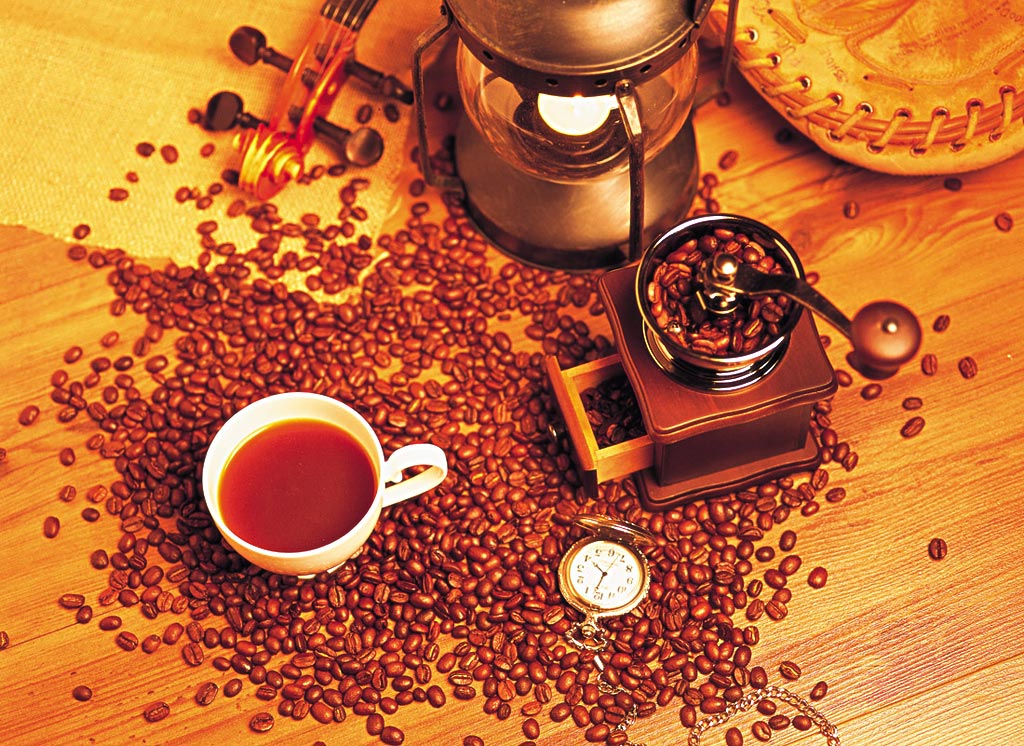Key points of coffee quality knowledge: a detailed explanation of the professional description of coffee tasting
Pleasant acidity, sour (Acidity, Acidy) unpleasant sourness (Sour)
Not only did he not smell the fragrance, but his taste buds were not as sensitive as usual. Think back, whenever cold stuffy nose, eat things do not feel more tasteless? Usually sour foods smell sour, and the taste we experience is actually a complex interaction of taste and smell. It seems difficult to separate taste from smell. No wonder the word "taste" itself includes the taste of smell and taste.
We often have the opportunity to taste various sour tastes, such as lemon, apple, wine, black vinegar... there is no doubt that sour taste is the delicious part of these foods: similarly, the wonderful sour taste is the reason why certain coffees are highly valued. In fact, all coffee has sour taste, because raw beans contain a lot of chloric acid, and during the roasting process, these chloric acids will be converted into various aromatic or pungent acids; however, these acids will be scorched at high temperatures, making the deeper the beans are roasted, the less sour.
It is not difficult to tell the difference between good and bad acids, just as you can tell the difference between fruit acids and hydrochloric acid. If the brew temperature is too low, or over-extraction, tannins, nicotine, etc. in the coffee will enter your mouth, irritate the underside of the tongue on both sides, accompanied by a nasal odor, making you feel uncomfortable. This is different from delicious acid, strong acid stimulates the edges of the tongue on both sides, evoking adjectives such as "thin" and "sharp", while soft acid in addition to the two sides of the tongue, near the middle of the tongue will also have a uniform feeling, so that some soft acid close to the salty (such as tomato and plum acid) or soda feeling. Because the distinctive acidity often overshadows the texture and becomes the main body of taste, some people use "clean" or "Bell-like" to describe the coffee with outstanding acidity.
The sour flavor adds richness to the sour taste. Some slightly stimulating fragrances can refresh the mind, make people notice at once, give people a "bright" feeling; on the contrary, some fragrances give people a dark feeling. For example, ginger, soda, lemon, apple, orange, tomato, ripe banana, their brightness is getting lower and lower.
The reason why most people don't like the sour taste of coffee is probably that they are not used to sour and bitter together. Fortunately, sour taste can be suppressed by sweet taste, such as lemon juice with sugar, which is generally acceptable; if coffee is too sour, you can choose to add sugar. Sugar is not like milk, which not only does not affect the other mellow taste, but also can increase the sweetness of coffee.
● Clean
Coffee is not earthy, wild, flawed or dazzling.
● Balance
There are sufficiently complex and interesting features, but none of them stand out.
● Body, Mouthfeel
Texture refers to the thick, sticky feel of coffee in the mouth, which is approximately proportional to the amount of colloidal suspension in coffee. Since the texture is felt throughout the mouth, we use the term "rich" to describe thick coffee, and vice versa. Thin coffee tastes like wine or lemonade, while rich coffee tastes like whole milk or syrup.
Complexity (Complexity)
It refers to the coexistence of different levels of characteristics in the same cup of coffee, with high complexity, indicating that there are many types of sensory stimuli that can be felt; it should be noted that these feelings include aftertones and are not necessarily limited to the current feeling when drinking.
● Depth
It is a subjective adjective that refers to resonance and influence beyond sensory stimulation, which may be caused by some detailed feelings or complex interactions between different feelings.
● Bitter
This is characteristic of dark baked beans, and like sourness, it is not necessarily unpleasant, but the feeling of the whole mouth and throat, not just the tongue. Most people who drink American coffee or espresso coffee may use the word "strong" to describe this characteristic.
● Sweet
It means two things. The first is the stimulation of sugar on the tip of the tongue, which is generally called sweetness; the other means that between deep city baking and Espresso baking, due to the part of astringent substances and rich texture of the mellow taste, reminiscent of syrup; this tongue does not have to react.
● Smooth
A sweet Espresso that is slightly sour and bitter, with a little sugar and can be drunk comfortably without milk.
Flavor [Flavor]
It is the overall impression of aroma, acidity, and alcohol. It can be used to describe the overall feeling of coffee.
Acidity
It is all the sour and strong characteristics of coffee grown in the plateau. The sour acrid is different from bitter or sour, and it has nothing to do with pH value, but it is a fresh and lively quality that promotes coffee to exert functions such as boosting the mind and cleansing the taste.
Body [Alcohol]
Is the conditioning of coffee after drinking, in the tongue to coffee leaves some taste. Alcohol varies from watery to light, medium, high, fatty, and even syrupy in some Indonesian coffees.
Aroma [smell]
Aroma refers to the aroma and aroma emitted by coffee after conditioning. Bouquet is a less commonly used word for the taste of ground coffee. Aroma is usually specific and comprehensive. Words used to describe Aroma include: caramel, charred, chocolate, fruity, grassy, malty, rich, rich, spicy, etc.
Bitter
Bitterness is a basic taste, and the sensory area is distributed in the root of the tongue. The bitterness of dark roasts is deliberately created, but the most common cause of bitterness is too much coffee powder and too little water. Bitterness is not the assent word for sour.
Bland [Light]
Coffee grown in lowlands and usually quite light and tasteless. Coffee with too little powder and too much water will also have the same light effect.
Briny
Coffee brewed, if overheated, will produce a salty taste. Some coffee shops have coffee that tastes like this.
Earthy
Usually used to describe spicy and earthy Indonesian coffee. But these references to mud do not refer to coffee beans stained with mud taste. Some commercial coffees are mixed with cheap coffee, and the muddy taste may turn dirty, apparently because of the drying and rough processing techniques used to spread the beans on the ground.
Exotic
Coffee has a unique aroma and special smell, such as flowers, fruits, spices like sweet characteristics. Coffee grown in East Africa and Indonesia usually has this characteristic.
Mellow [Aromatic Alcohol]
Coffee is an adjective used to describe coffee with low to medium acidity and good balance.
Mild
It indicates that a coffee has a harmonious and delicate flavor. Highland latin american coffee usually described as mild. It is also a term used in coffee circles to refer to all highland coffee except Brazil.
Soft
A coffee with low acidity, such as Indonesian coffee. It can also be described as aromatic or sweet.
Sour
A taste zone located primarily on the back of the tongue and characteristic of light roasted coffee.
Spicy [Spicy]
A flavor or smell reminiscent of a particular spice. A type of highland coffee (especially aged coffee) produced in Indonesia, with a sweet cardamom smell.
Strong
Technically, it describes the number of advantages and disadvantages of various tastes, or the relative proportion of coffee and water in a particular conditioning product. In colloquial usage, intense describes the intense flavor of dark roast coffee. In addition, it misleads people into the illusion that it contains a lot of caffeine. In fact, canned light coffee is high in caffeine because it contains more decaf coffee.
Sweet [Sweet]
A commonly used adjective, almost fruity in nature and associated with alcohol. Coffee grown in the highlands of Costa Rica usually has a strong flavor.
Wild
Coffee has extreme taste characteristics. If ordinary people could not accept it, they would call it odd, but it could also be an attractive feature, depending on personal preferences.
Winy
Describe an attractive flavor reminiscent of wine. Fruity acidity and smooth body, creating a special flavor contrast.
Source:
Blogs of coffee lovers
Important Notice :
前街咖啡 FrontStreet Coffee has moved to new addredd:
FrontStreet Coffee Address: 315,Donghua East Road,GuangZhou
Tel:020 38364473
- Prev

Introduction of coffee brewing method: detailed introduction of the brewing method of mocha pot and matters needing attention
If you use a mocha pot to brew energetic coffee, you must master some small secrets. No. 1 will provide you with the following methods as a reference: 1. Pour fresh cold water into the pot, and the quantity must be moderate. There is a bar mark on the inner edge of the lower pot of Moka Expess, indicating that the water level should not be higher than here, otherwise, the cold water will overflow into the middle coffee powder, destroying the aroma of the coffee and compacting it.
- Next

Introduction to Italian Coffee making course: Espresso production: degree of Grinding (1) detailed explanation
I talked about the steps of pressing powder in the process of making Espresso and the strength of pressing powder, and mentioned a little about the factors that affect the strength of pressing powder, one of which is the degree of grinding of coffee powder. Grinding refers to the process of grinding coffee beans into the coffee powder used in making coffee by using a bean grinder (or manual grinding apparatus), and the degree of grinding refers to the thickness of the coffee powder.
Related
- What is the meaning of lactic acid fermentation with coffee bean treatment?
- How to judge the state of foam by sound?
- How does the latte pull out the unicorn pattern? Come to get for a little trick to improve the flower pull!
- Will flower pulling affect the taste of the latte?
- Do you know the history of coffee?
- The difference between honey treatment and sun washing what is raisin honey treatment?
- What kind of milk can a novice use to make coffee foam to keep the foam longer? The correct method and skills of milking tutorial sharing
- Why do washed coffee beans taste sour? Flavor characteristics of washed Coffee
- Introduction to the skill of how to practice the size and height of water injection around the circle of hand-brewed coffee
- How do beginners practice coffee flower drawing from scratch?

